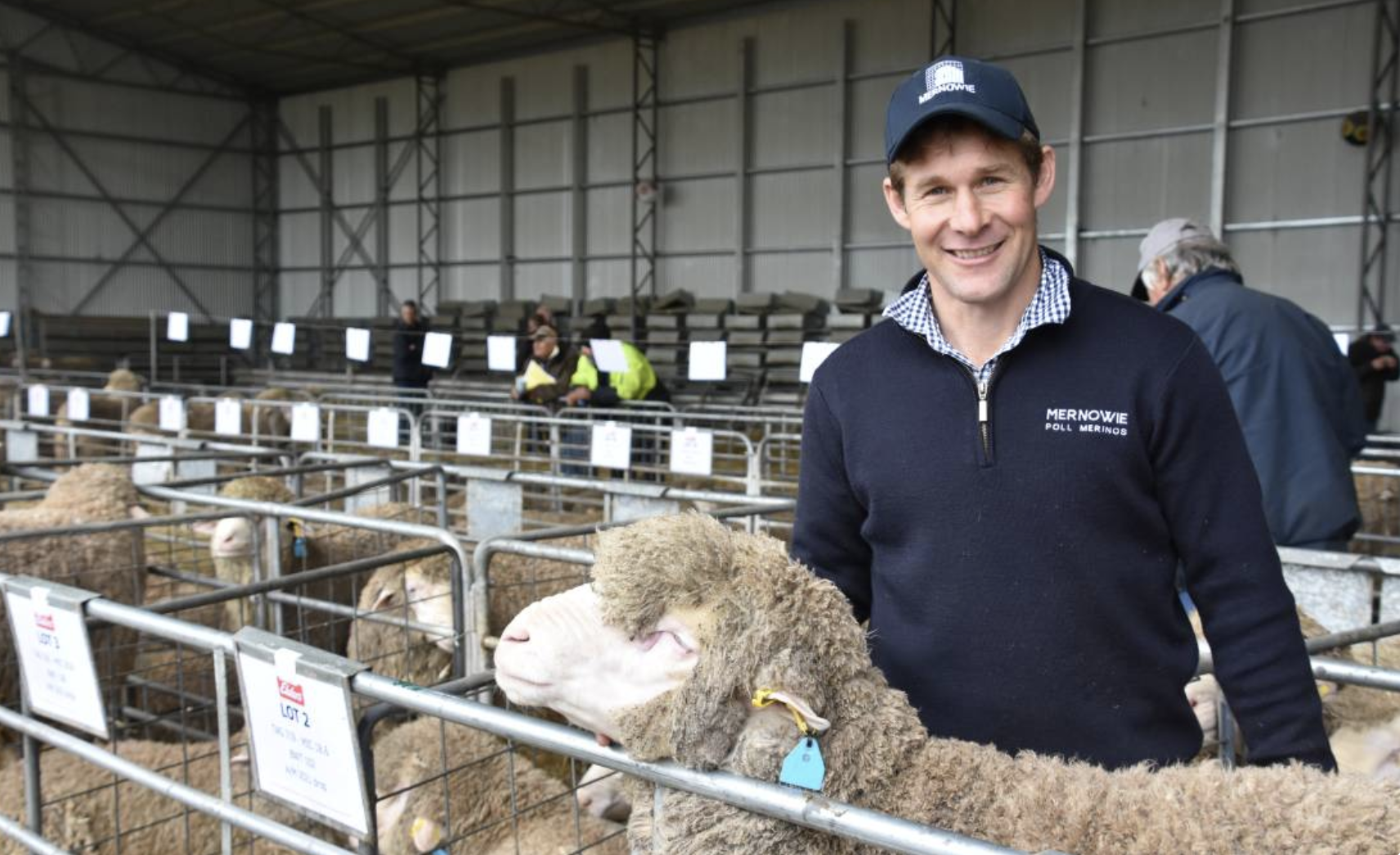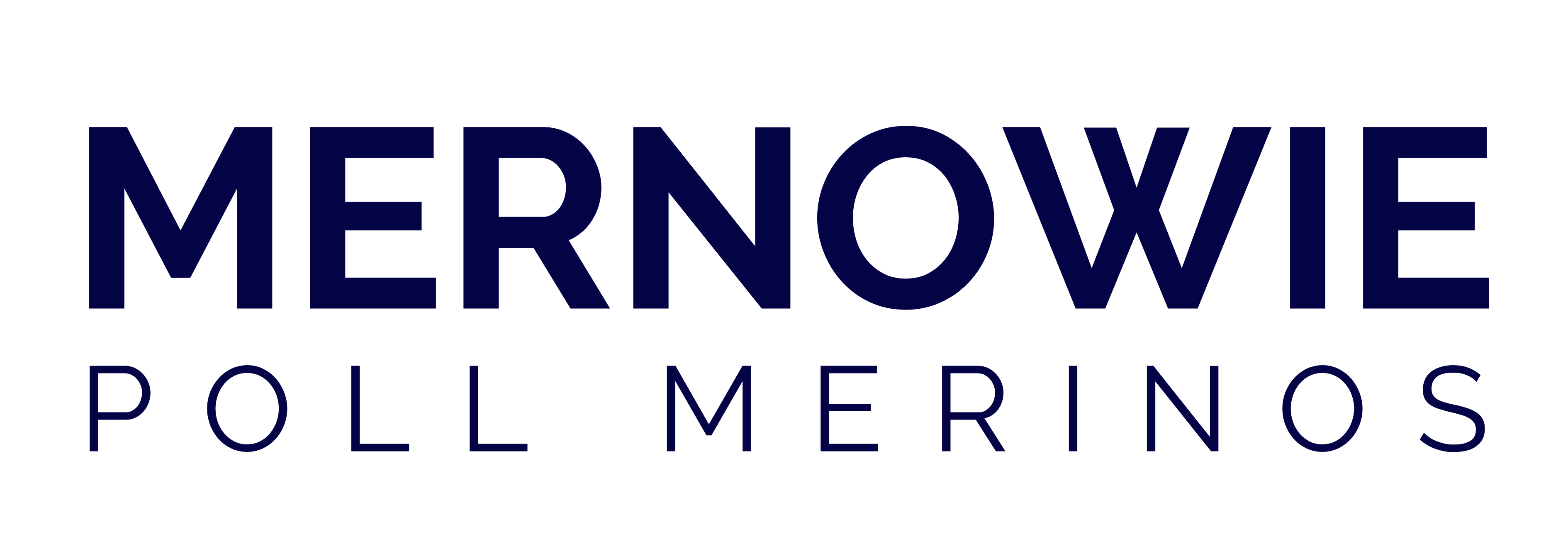
^David Rowett, Mernowie Poll Merino stud, Marrabel, says ASBVs are not an “exacting science” but they are an “excellent guide” in sheep selection.
The state’s Merino breeders are taking some of the guess work out of ram selection for their clients with growing numbers offering Australian Sheep Breeding Values.
Several Merino studs have been members of MerinoSelect for more than a decade but this year there were a few more who put across flock figures up on their placards for the first time at their ram sales.
Much of this is being driven by a data-driven younger generation of farmers pressuring their ram breeders for this information.
Since 2019, there has been a 23.5 per cent increase in Sheep Genetics members in SA, with many of them Merino breeders.
Nutrien SA stud stock manager Gordon Wood says the growing interest in ASBVs has been simmering away for years but there has been a “seismic shift” in adoption in the past couple of years.
Mr Wood said 23 of the 55 Merino sales they were selling agents for in 2022 displayed ASBVs.
He has noticed the studs offering this performance data are seeing more competition, which is often translating into higher prices.
The ‘trust me, it’s a good sheep’ is not going to hold.
– GORDON WOOD
“It is not just commercial breeders, we have seen studs buying from other studs with ASBVs to head down this path,” he said.
He says the next generation of sheep breeders in particular will not be willing to buy flock-improving rams based just on the opinion of the stud breeder.
“If a local agronomist came out and said there is a new variety of seed or grain and said ‘trust me, it is a good product’ but then there was no yield data or trial results, they wouldn’t sell a bag of it.
“If the Merino breeders want to fortify their future in the sheep industry, they need to embrace all the technology available to them, including ASBVs.”
A survey by Meat & Livestock Australia in 2019 found 44 per cent of sheep producers surveyed were using breeding values when selecting sires, but MLA’s manager – sheep genetics Peta Bradley is confident the next survey findings, due out next year, will show another jump.
She says the dairy, pig and poultry industries are evidence of the successful genetic progress that can be made through the use of breeding values.
The shift in flock breeding objectives from solely weight, muscle and fat and fleece weights a decade ago to hard to measure traits had been another reason for sheep breeders to adopt ASBVs.
“There is more emphasis on traits such as eating quality where the only way to make progress is through breeding values – there is no way to measure it on-farm,” she said.
Ms Bradley says the big increase in flock profile testing, where commercial producers can sample 20 ewes in their flock, has given breeders a benchmark to begin selecting on.
She says achieving full pedigree had been a limiting factor for some Merino flocks but there has been a dramatic increase in genomic testing and parentage verification in the past year assisting this.
In September, there were more than 39,000 of these tests added to the genomics database, which is managed by the Animal Genetics and Breeding Unit. This is a record month.
Mernowie Poll Merino stud co-principal David Rowett acknowledges ASBVs are “not an exacting science but an excellent guide” to how animals will breed on.
It has enabled the Marrabel based stud to make significant genetic progress with the average micron of their sale rams dropping in the past seven years from 19.3M to 17.4M and the yearling clean fleece weight increasing at the same time by 47pc to a 23.98 average for their 2022 sale rams
Yearling weight has remained stable at 7.6.
Mr Rowett said the initial catalyst for joining Merino Select was to lift their yearling weights to successfully mate their stud ewe lambs, but they now collect a wide range of wool, carcase and fertility traits.
“We still obviously look at the sheep and structure is most important but I don’t think we would use a ram in the stud that doesn’t have figures ,” he said.
“We look more for a balance across the traits rather than extremes.”
Mr Rowett says it is a “handy tool” increasingly being demanded by many of their commercial clients, who like to narrow down their selections before sale day using the data.
Despite the increased number of SA Merino studs joining Sheep Genetics, Mr Rowett would like to see more.
“If we could get everyone (every stud breeder) to do it, they might take a hit until they get their accuracies and pedigrees up, which puts some people off but if everyone was in, it would benefit the industry,” he said.
